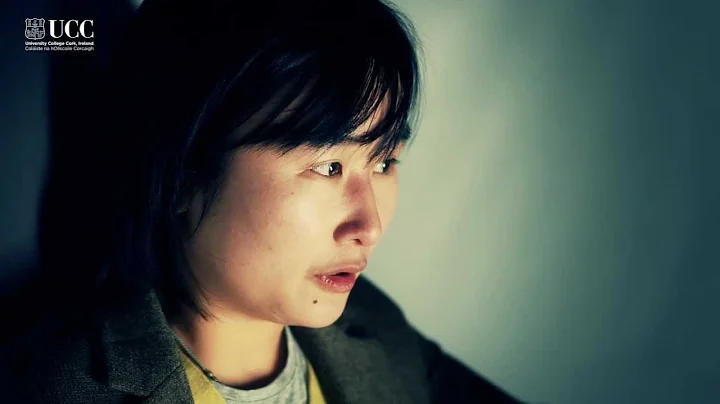
Wu Guosheng, male, from Guangji (Wuxue), Hubei. Professor, doctoral supervisor. Bachelor of Science and Master of Philosophy from Peking University, Ph.D. of Philosophy from the Chinese Academy of Social Sciences. He is currently a tenured professor at the School of Humanities at Tsinghua University and director of the Department of History of Science. He is also a member of the Scientific and Technological History Discipline Evaluation Group of the Academic Degrees Committee of the State Council and the Director of the Science Communication and Science Education Professional Committee of the Chinese Dialectics of Nature Research Association. He served as the vice chairman of the 7th and 8th Chinese Society for the History of Science and Technology and director of the Research Center for the History and Philosophy of Science at Peking University.
Just as the " arrow of time " emerged within classical science, the " holism " factor also appeared within classical science. This manifests itself particularly in Quantum Mechanics . Quantum mechanics consolidates the foundation of holism in the most microscopic areas.
The Copenhagen School, headed by Niels Bohr, integrated wave dynamics based on the wave image of matter and matrix mechanics based on the particle image of matter, and proposed a statistical explanation of wave functions (Born), Uncertainty Principle ( Heisenberg ) and Complementarity Principle ( Bohr ), form a systematic explanation of quantum mechanics. Since the Copenhagen School played a huge role and influence in the creation of quantum mechanics, their interpretation is often called the orthodox interpretation.
One of the outstanding features of the world picture given by the orthodox interpretation is the introduction of probabilistic randomness in the microscopic realm. The second feature is that it highlights the integrity of quantum phenomena and the accompanying fuzziness of the subject-object distinction. Since quantum mechanics is directly based on the results of experimental observations, and experimental observations depend on the selection and arrangement of measuring instruments and measurement procedures, they are not just an undistorted reflection of an independent object world. Therefore, what quantum mechanics provides In principle, the world picture cannot exclude the role of the observing subject. What it shows is a picture of subject and object blending and interacting with each other. "In this great drama of existence, we are both spectators and actors."
The orthodox explanation has greatly shaken the traditional conceptual framework and thinking methods of classical science, causing many debates. The most influential of these was the debate between Einstein and Bohr over whether quantum mechanics was complete. Einstein was originally one of the founders of quantum theory , but he was dissatisfied with the subsequent development of quantum theory and the interpretation in Copenhagen. Einstein disagreed with the two prominent features of the quantum world picture given by the orthodox explanation - probabilistic randomness and quantum integrity. Einstein firmly believed that the purpose of science is to discover the deterministic laws hidden behind nature. God is not a gambler and does not play dice. Therefore, quantum mechanics, which only gives statistical laws, is definitely incomplete. The debate between Bohr and Einstein has been called by science historians as "one of the great scientific debates in the history of physics, perhaps comparable only to the Newton-Leibniz debate in the early 18th century."
In 1927, at the fifth Solvay Conference held at the Solvay Institute in Brussels (funded by Belgian chemical industrialist Solvay and held every 3 years since 1911), Einstein and Bohr had an exciting debate. Einstein came up with an ideal experiment to try to prove that the so-called uncertainty relationship (uncertainty principle) of quantum mechanics can be broken. The ideal experiment would be this: electrons (or photons) pass through a slit on a screen, then pass through a second screen with two slits, and finally land on a photographic film. Due to the wave nature of electrons (or photons) in the quantum realm, the electrons traveling to the second screen will leave this screen as wave trains and interfere with each other, forming an interference pattern, that is, light and dark stripes on the photographic film. Naturally, this stripe is caused by the points formed by electrons hitting the film, which reflects the particle nature of electrons; these stripes are distributed according to the law of fluctuation, which reflects the wave nature of electrons.Both Einstein and Bohr agreed with these statements. Now, Einstein's idea was to adjust the slit of the first screen so that it was small enough so that only one electron hit the second screen. As a particle, this electron either passes through the upper slit or the lower slit. It will have a slight upward (downward) kickback to the screen when passing through the upper (lower) slit. By measuring the momentum imparted by the electron to the screen and analyzing the diffraction pattern on the film, we know the momentum of the electron as it passes through the slit. At the same time, by measuring whether the momentum of the electrons transferred to the screen is upward or downward, we can also know whether the electrons pass through the upper slit or the lower slit - so that the position of the electron is also clear. Einstein believed that this would break Heisenberg's indeterminate relationship. After breakfast during the
conference, Einstein handed this ideal experiment to Bohr. That evening, Bohr prepared his answer. Bohr said that given the quantum nature of the second screen, it would be impossible to determine its momentum and position simultaneously. Our accuracy needs to be such that we can measure whether the electron passes through the upper or lower slit. There is a corresponding uncertainty in the position of the slit, and this uncertainty is enough to change the diffraction pattern on the film beyond recognition.
It seems that quantum mechanics is logically non-contradictory. Einstein had nothing to say and had to lead the debate to a philosophical level. He said helplessly: "Do you really believe that Almighty God can only play dice?" Bohr is said to have replied humorously: "It is not our task to instruct God how to manage the world." In 1930, the next time he asked The Erwei Conference was held. Einstein brought a new ideal experiment to challenge Bohr. The experimental setup is a closed box with a shutter mounted on one face. The shutter is controlled by a timing device whose clock is aligned with the clock outside the box. There is a certain amount of radiation inside the box. When the shutter is opened, a photon will be emitted, and one second later it will hit the photographic film 300,000 kilometers away from the box. The box is hung on a spring scale, and the weight lost due to the escape of photons can be measured. This box later became often called the Einstein Photon Box. Einstein said that according to your uncertainty relationship , it is impossible to measure energy and time accurately at the same time. But in my ideal experiment, the time it takes to run out a photon and the energy of this photon (through the mass-energy relationship are determined by mass (measured by the reduction) can be measured accurately at the same time.
This new ideal experiment is more sophisticated and uses Einstein's own theory of relativity. It is said that Bohr thought for a long time and spent a sleepless night on this, but finally he gave the answer. This answer is very clever. It uses Einstein's theory of relativity to refute Einstein's ideal experiment. Bohr said that the key to answering this question is that the box is in the gravitational field (of the Earth), because only in the gravitational field is it possible to measure changes in mass based on changes in the spring balance (changes in gravity). According to the theory of relativity, the time of a clock in a gravitational field depends on its position in the gravitational field. When a photon flies out of the shutter, the position of the box in the gravitational field changes, thus affecting the accuracy of the clock inside the box (relative to the external clock). Here, the measurement of how many photons flew out and the measurement of time cannot be accurate at the same time.
Einstein once again had to agree and began to believe that Bohr was logically self-consistent. However, he doubted whether quantum mechanics was complete. Logical consistency and completeness are not the same thing. Einstein had always wanted to prove that quantum mechanics was logically inconsistent, but he admitted failure. In 1935, Einstein collaborated with Podolsky and Rosen to publish "Can Quantum Mechanics' Description of Physical Reality Be Considered Complete?" ", put forward the EPR argument collectively named after the first letters of their last names, showing that the description of physical reality by quantum mechanics is incomplete. The argument consists of four parts:
First, define completeness.The so-called completeness of a physical theory means that its necessary condition is: every element of physical reality has its counterpart in the physical theory (completeness criterion). The so-called physical reality refers to its sufficient condition : If we can accurately predict the value of a physical quantity without any interference in the physical system, then there is an element of physical reality corresponding to this physical quantity ( reality criterion).
Second, describe the general characteristics of quantum mechanics. For quantum mechanics, precise knowledge of one of two physical quantities represented by non-commutable operators (such as position and momentum, energy and time, etc.) precludes precise knowledge of the other. If these two physical quantities correspond to a physical reality, then quantum mechanics based on wave function description is incomplete. Otherwise, these two physical quantities cannot be real at the same time. This is an either/or reasoning: either quantum mechanics is incomplete, or these two physical quantities cannot be real at the same time.
Third, the application of a special case. Consider a system consisting of two particles, A and B. The two particles begin to interact for a period of time, and then go their separate ways without interacting with each other. According to quantum mechanics, after they are separated, only the momentum of the A particle is measured, and the momentum of the B particle can be accurately measured without any interference. Or by measuring the position of particle A, you can accurately calculate the position of particle B. It is obvious that momentum in the former case and position in the latter case are both to be regarded as elements of reality.
Fourth, from the first and third, it can be concluded that momentum and position can be regarded as real at the same time. Therefore, quantum mechanics is incomplete. The key to the
EPR argument is to take advantage of the fact that the two particles A and B no longer interact. Since they no longer interact, EPR believes that any measurement of A will not affect the reality of particle B. In other words, the reality of particle B does not depend on the measurement of A. Whether you measure A's momentum or its position, the reality of the corresponding calculated momentum or position of B particle should not be affected. Therefore, to confirm the reality of the position or momentum of particle B, it does not require measuring the position and momentum of particle A at the same time, nor does it require measuring before and after, or only measuring one of them - it does not matter at all. Although this concept of "irrelevance" was not stated clearly by EPR, it played a key role in the argumentation process and was later called the "locality hypothesis". In layman's terms, the locality assumption means that there is no mysterious long-distance relationship between any two objects.
Bohr countered that the statement "the physical system is not subject to any disturbance" in the reality criterion proposed by EPR is ambiguous. Whether to measure the momentum of A or the position of A is decisive for the A+B system. , and the momentum or position of B is calculated based on the wave function of the A+B system. Bohr emphasized that the interaction between the physical objects of classical mechanics and the measuring device can in principle be eliminated or compensated for, but in quantum mechanics, this interaction becomes an integral part of quantum phenomena. Bohr said: "For any clear application of the formal system of quantum mechanics, the determination of this experimental setup is indispensable." The measurement conditions should be regarded as an integral part of the entire quantum phenomenon.
Bohr’s refutation of EPR reveals the holistic character of quantum phenomena. Even if two particles are far apart and cannot interact at the speed of light, they can still have a close and decisive connection in the sense of quantum mechanics. This kind of action at a distance obviously violates the spirit of the theory of relativity and is something Einstein could not agree with. Since quantum phenomena are considered the most fundamental and universal phenomena in the physical world, this holistic connection will permeate every corner of the world. Even the beginning of the universe is somehow quantumly related to the present. Physicist Wheeler once conceived the possibility that something we do today changes the physical events that happened at the beginning of the universe, and therefore our universe is a universe in which we participate . This may seem absurd at first glance.Dirac of the Copenhagen School also admitted that quantum mechanics faces the difficulty of "locality destruction" and feels that clear physical concepts have been lost. Inspired by the EPR argument, some physicists try to find a "localized" hidden variable theory, that is, deriving quantum mechanics as a phenomenological theory from the hidden variable theory, and this hidden variable theory remains intact. Locality.
However, more than half a century has passed, and no better theory has emerged to explain those phenomena that quantum mechanics has already explained. This fact seems to remind people that quantum mechanics is indeed complete. In 1965, Bell proposed that any local hidden variable theory cannot repeatedly give all the statistical predictions of quantum mechanics. This assertion is called Bell's theorem . He derived a spin-related inequality, the famous Bell's inequality . Comparing the prediction of this inequality with the prediction of quantum mechanics, we can find that the spin-related variables given by the local hidden variable theory are not always equal to the correlation given by quantum mechanics. Bell's inequality is weaker than quantum mechanics. Many subsequent experiments showed that Bell's inequality was broken, and Bell's theorem was proved to some extent. In 1979, Stapp of the Lorentz Laboratory at the University of California, Berkeley, further developed Bell's discovery into the generalized Bell theorem: no local theory can repeatedly give all the statistical predictions of quantum mechanics.
The locality violation of quantum mechanics shows some kind of conflict between quantum mechanics and the theory of relativity. The integration of these two theories will take time. But Bell's theorem is increasingly confirmed, showing people the reality of wonderful quantum correlations. This connection is manifested between man and nature, between subject and object, and between the past and present of the universe. The holistic characteristics of the quantum field are new ideas that grew out of classical science itself. In a sense, it has greatly inspired many emerging holistic sciences.





















